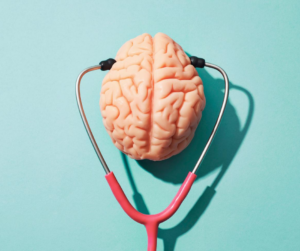The Severe Mental Illness Stigma
Kanye West has been the laughing stock of the internet over the last couple of years due to his erratic behavior. There have been tweets, memes, articles, and posts mocking Kanye and his unraveling psyche. People have opened up a lot about mental health issues. We have been going on and on about self-care. Though we finally feel comfortable talking about mental health struggles, the disorders that are typically mentioned are anxiety or depression. These conditions are, of course, difficult to deal with. However, depression and anxiety are more “acceptable” to society because they’re so common. Severe mental illnesses like Schizophrenia or Bipolar Disorder are still highly stigmatized.
What is Bipolar Disorder?
In 2017 Kanye West was officially diagnosed with Bipolar Disorder. Bipolar disorder is a misunderstood mental illness. Only about 2.6% of the adult population in the U.S. have it. Bipolar disorder looks different on everyone. Mr. West’s condition is on the more severe end of the spectrum. The epigenetic model describes Bipolar Disorder as a bridge to help providers and individuals know if a person is more likely to have symptoms of Bipolar Disorder, Depression, or Schizophrenia. The most common bipolar disorders are Bipolar I, Bipolar II, and Cyclothymia.
Bipolar I
Individuals with Bipolar I experience one or more manic episodes lasting seven days or more. Major depressive episodes aren’t uncommon for people with Bipolar I. Manic episodes in Bipolar I tend to have more extreme and disruptive behaviors.
Bipolar II
Bipolar II is similar to Bipolar I. People with Bipolar II have reoccurring depressive episodes that last for two weeks or more. These episodes shift into hypomanic episodes. Hypomanic episodes are less severe than manic episodes.
Cyclothymic Disorder
Cyclothymia is a chronic disorder characterized by mood swings involving numerous periods of hypomanic symptoms and periods of depressive symptoms. These symptoms last for at least two years. People with Cyclothymic Disorder have brief periods with stable moods. This stability won’t last for more than eight weeks.

Patients with Bipolar Disorder tend to experience a decrease in psychosocial functioning and family discord. When people with bipolar disorders come off as “moody”, it’s a display of the chemical imbalance in their brain. Therapists and counselors can teach emotion regulation skills to help individuals with Bipolar Disorder understand and influence their emotions. This is something that can be helped through therapy.
Mania vs. Hypomania
| Mania | Hypomania |
| 7+ consecutive days | 4 consecutive days |
| Lack of control | Semi-controlled |
| Delusions/hallucinations | Not severe enough to impair |
| Might require hospitalization | No hospitalization required |
| Psychosis potential | No psychosis |
| Racing thoughts | |
| Rapid speed/Talkativeness | |
| Irritability | |
| Impulsivity | |
| Mood lability | |
| Distractedness | |
| Psychomotor agitation | |
| Inspiration to start on new projects | |
| Sleep deprivation or a decreased need for sleep | |
How to Treat Bipolar Disorder
While Bipolar Disorder can’t be “cured”, treatment options are available. Treatment for Bipolar Disorder is usually necessary for people with severe symptoms. A combination of therapy/counseling and medication management are used for treatment. Medication might differ depending on other co-occurring factors. Some medications used could be mood stabilizers, antipsychotics, and/or antidepressants. At Sage Neuroscience Center we provide counseling/therapy services and medication management to care for the mental health needs of the Albuquerque community.
When people like Kanye West are criticized in the media for their seemingly outrageous behavior, take a step back before diving in to the conversation about them. Think about what’s actually going on in their brain. You never know what mental battles someone is fighting. Passing judgements or making fun of people for their mental health problems only worsens the stigmas of severe mental health conditions.
